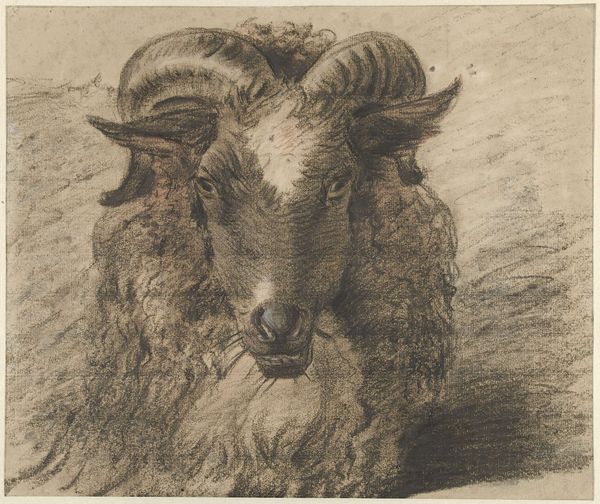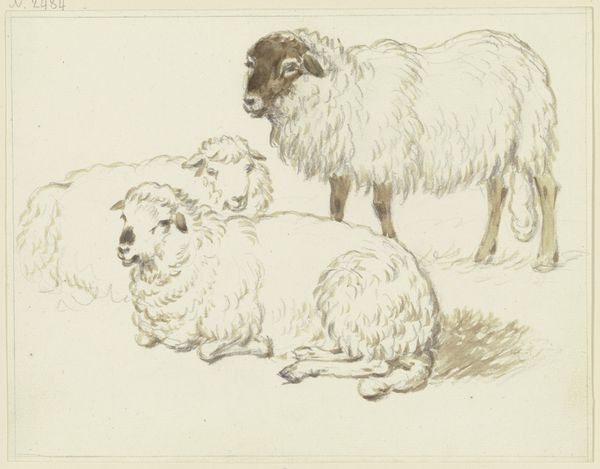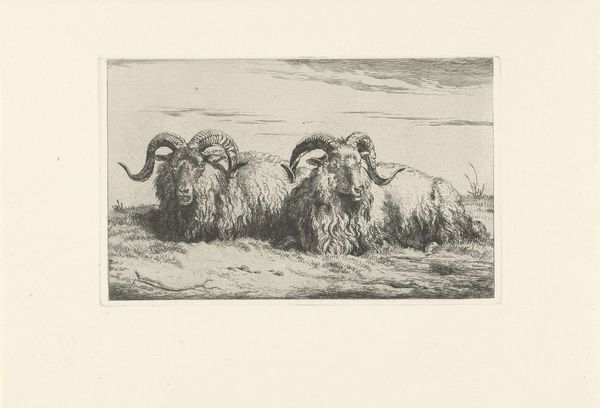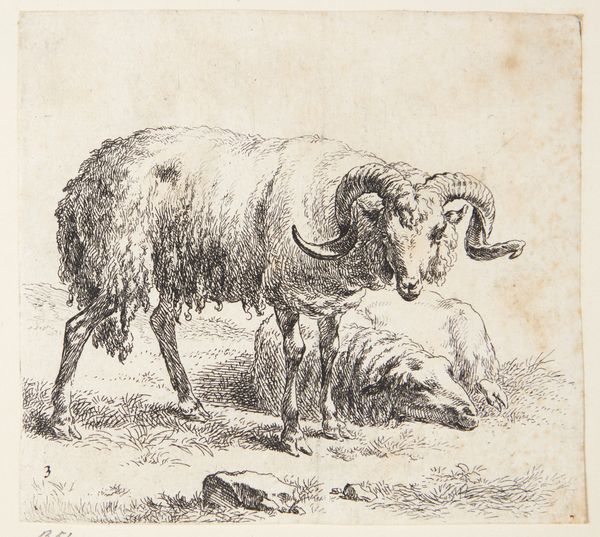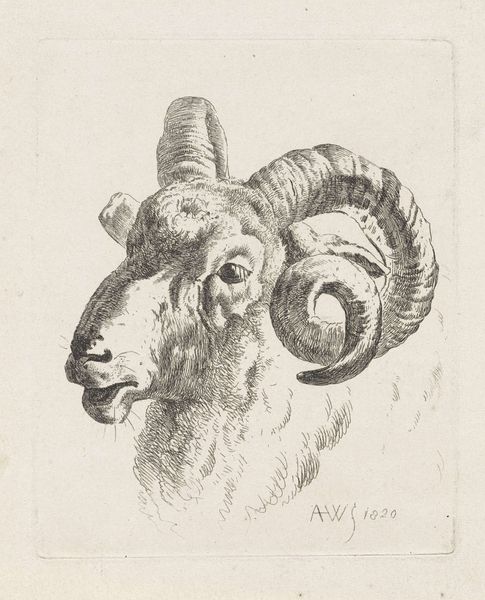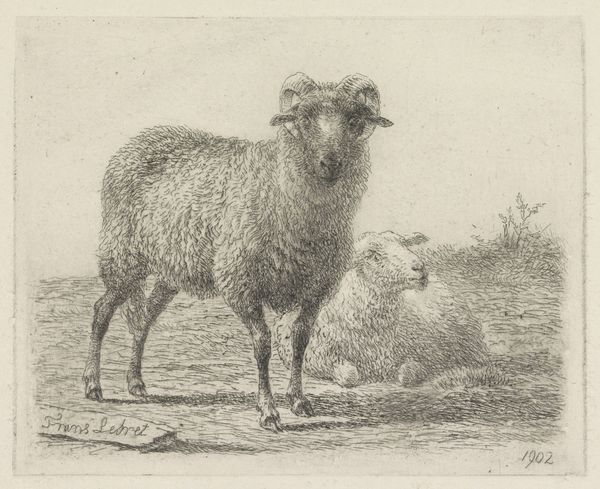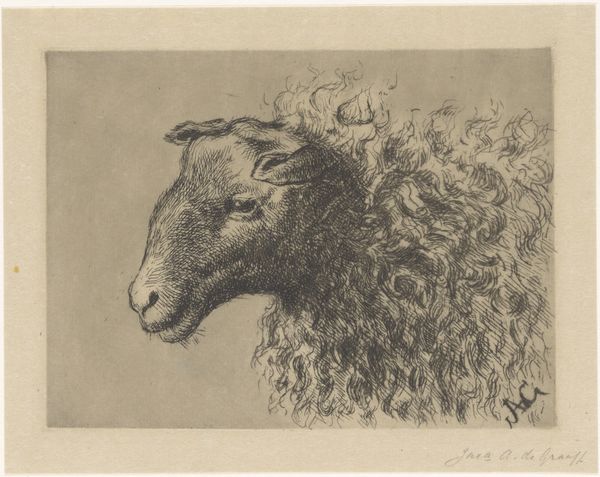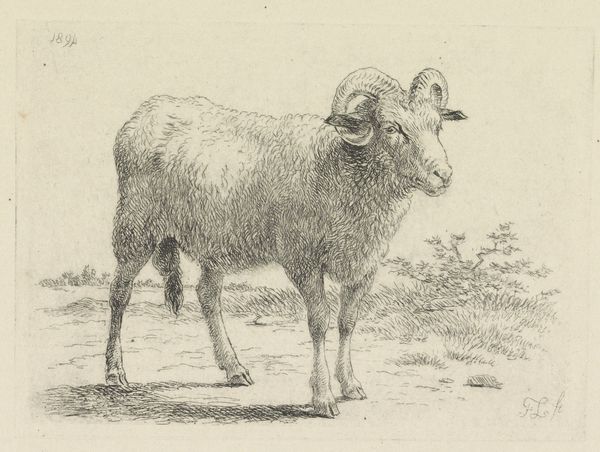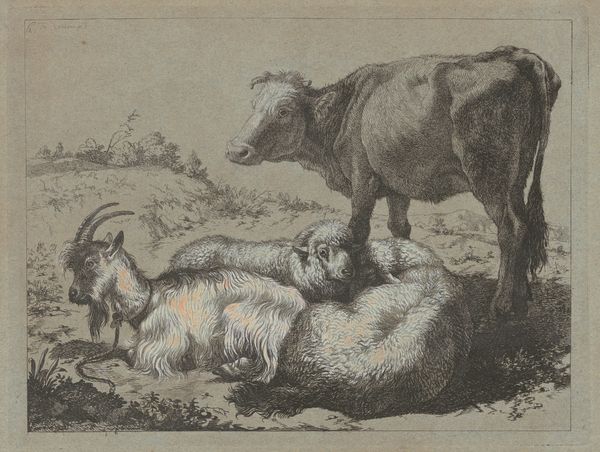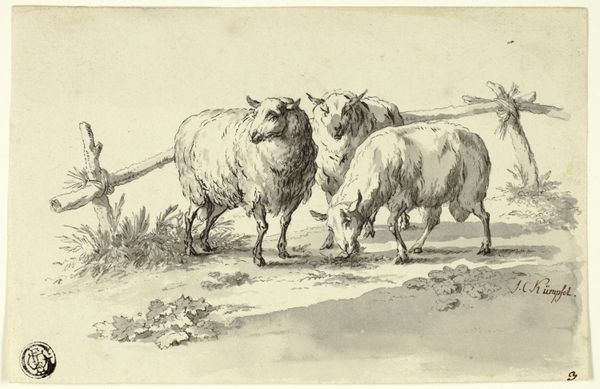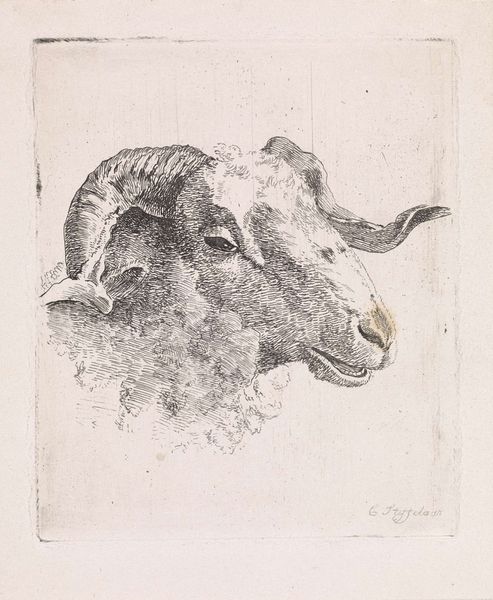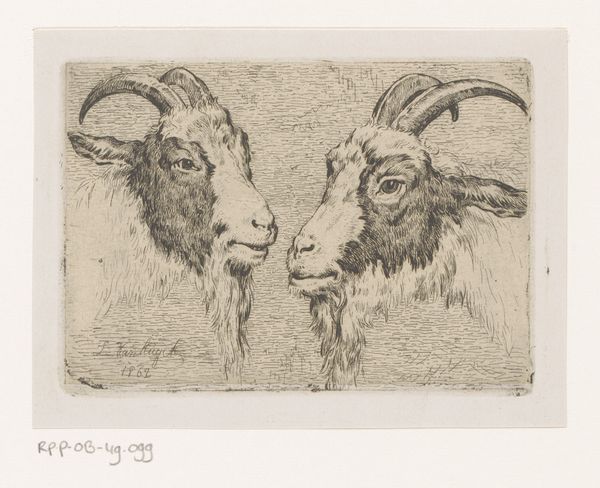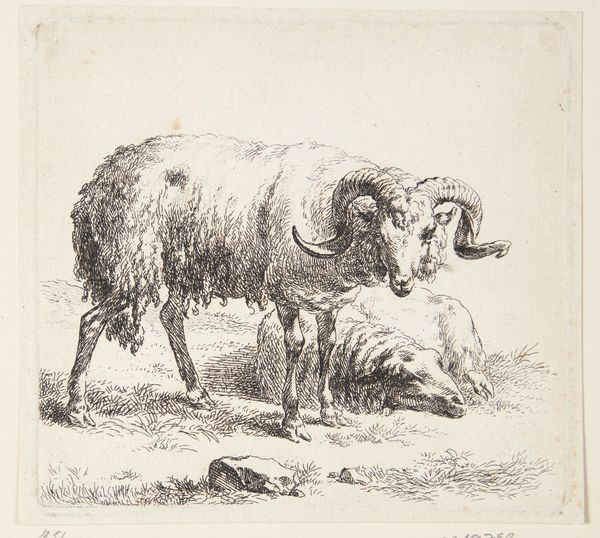
drawing, paper, watercolor, chalk
#
drawing
#
toned paper
#
landscape
#
charcoal drawing
#
figuration
#
paper
#
watercolor
#
romanticism
#
chalk
Copyright: Public Domain
Editor: Here we have "Two Sheep" by Jacob van Strij, made with chalk, watercolor and charcoal on paper. The detail is amazing, but also...sort of idealized? It's like looking at livestock through a Romantic lens. What's your take? Curator: Consider the toned paper. The support itself is an active agent. Its color affects our perception of every stroke, influencing how the chalk, watercolor, and charcoal behave on its surface. It represents a careful control over materials. But more than that, this careful layering points to the economics of artistic practice: these drawings weren't mere sketches, but commodities meant to be sold. Do you see evidence of that process? Editor: Hmm, I see the deliberate detail, you're right. The paper isn't just a surface; it's a chosen material contributing to the finished "product," influencing texture and light. And thinking of the market, maybe idealizing the sheep made them more appealing to buyers? Curator: Precisely. Reflect on how the selection and manipulation of materials -- the layering of charcoal and watercolor, the careful toning of the paper -- transform simple farm animals into desirable objects. Where do you think Van Strij sourced his materials? Editor: Well, being in the Netherlands, likely from local suppliers. It makes me wonder about the chalk itself – was it industrial or small-batch? Even the source connects it to larger industries and artistic communities! Curator: Indeed. Now consider how Van Strij's work operates within a larger economic system. Think of the sheep not just as animals, but as embodiments of agricultural production, carefully rendered for an emerging art market that valued both pastoral scenes and artistic skill. Does that change how you view the artwork? Editor: It does! I now appreciate it as this meeting point of labor, material, and commerce, and something more complicated than a pretty picture. Curator: Absolutely, viewing art through this material lens transforms how we engage with it. Editor: I’ll definitely be considering materiality a lot more. Thanks for that new perspective!
Comments
No comments
Be the first to comment and join the conversation on the ultimate creative platform.
